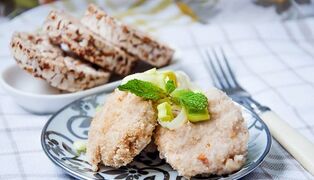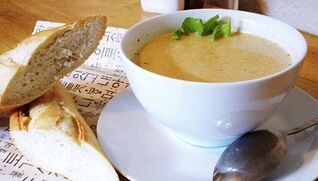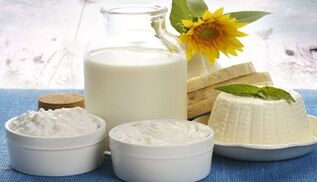
Pancreatitis is a serious disease of the pancreas, which is a violation of the production of digestive enzymes. The main symptoms of disease are left or right hypochondrium, heartburn, nausea, vomiting, and abdominal discomfort followed by eating pains.
Strict adherence to dietary guidelines is the key to the treatment of pancreatitis. Eventually, the disease often develops due to improper lifestyles, alcohol use and large amounts of "junk" food.
Diet for pancreatitis helps patients reduce pain during the course of the disease and add a phase of demonetization. In acute and chronic pancreatitis, nutrition is different, but it still has some similarities. Let's find their similarities. Let's talk about
General Nutrition Rules for Pancreatitis
The main requirement of the diet is to increase the amount of fat and carbohydrate reducing proteins in the main diet and if possible, they should be completely eliminated). In particular you should give up granulated sugar intake. , Because it contains 99% carbohydrates.
Fatty foods high in coarse fiber should disappear completely from the lives of pancreatitis patients. Finally, they place a strong load on the pancreas, resulting in the organ starting to produce very large amounts of digestive enzymes. , Which is dangerous in this disease and can cause serious complications.
Doctors recommend that all patients with pancreatitis take vitamin complexes that will help fill the deficiency of vitamins and minerals in the body, often resulting from limited nutrition.

Meals should be scheduled at the same time.
To avoid excessive stress on the pancreas and more food, eat in small portions 5-6 times a day.
Diet for acute pancreatitis
As a rule, acute pancreatitis manifests as a sudden sharp pain in the pit of the stomach. The pain is unbearable, and therefore forces a person to call an emergency ambulance. Before the doctor arrivesThe diet for acute pancreatitis is "zero". Under no circumstances should you eat food. Neither "light" nor "heavy".
Before the doctor arrives, it is permissible to take non-carbonated mineral water, but not more than 3 glasses. And they are allowed to drink only when the process of urination is normal.
Treatment of acute pancreatitis is only in a hospital setting. Fasting is prescribed for the first two days. It is now permitted to drink rose broth with mineral water. The total amount of liquid consumed is 5 glasses per day. Should not exceed
On the third day of treatment, the patient is allowed to eat fresh, low-calorie food that does not contain substances that irritate the pancreas and increase the secretion produced.
After the main symptoms subside, the diet for pancreatic pancreatitis continues for one to two months. During this period, you should give up completely:
- fried and fatty foods;
- muffins and pastries;
- pickles and smoked foods;
- pickles and canned food;
- spicy and sweet;
- onion and garlic;
- alcoholic beverages;
- fatty meat and fish;
- sausage.
All food products must be heat treated. They must be boiled in water or steamed. Do not use oil, salt and spices during cooking.

The patient is only allowed to eat hot and grated food. Before going to bed, it is recommended to use laxative fermented milk products - kefir, fermented baked milk.
The duration of the diet is 6 to 12 months. And it depends on how a person will follow that their health depends on the future. If all nutritional recommendations are disregarded, the disease takes a chronic formAnd then the patient will have to undergo a lifetime of treatment.
Diet for chronic pancreatitis in treatment
The chronic pancreatitis diet is slightly different from the diet above. In this case, the patient's diet is greatly expanded, but only in the remission phase. During the period of strangulation, the diet is of a completely different nature, but aboutAfter some time.
In chronic pancreatitis, protein consumption is allowed, which should be approximately several times higher than a person's daily intake, and the use of carbohydrates (sugar, honey, baked goods, pastries, etc. ) is also permitted. .
Foods that disturb the pancreas (hot spices, large amounts of salt, alcohol, etc. ) are a limitation.
The nutrition of the patient should also be partial. The number of meals is 4 to 6 times. The food served should be hot. You do not need to grind the food before consuming it.
Meat and fish products should not contain too much fat, otherwise it can cause liver degeneration, often in chronic pancreatitis. Pir contains many useful substances, and therefore the patient's diet. Should just be present. However, you can only eat homemade paneer, but not too fatty. It is forbidden to eat paneer cheese.
If a person cannot refuse bread, they are advised to use either yesterday's pastries or crackers (from gray or black bread only) during meals. You can also bake goods and pastries. Can eat, but in limited quantities (no more than one per day).
In case of pancreatitis, it is not advisable to drink milk in its pure form, as it is poorly digested. It can be added to tea or made into grains and soups. Even ifIf the patient tolerates milk well, he should not drink in large quantities. The maximum dose is 200 ml.

Fermented milk products are very useful for people with chronic pancreatitis. Even cheese, which is on the list of prohibited foods in other stages of the disease, can be consumed, but it is large. Not in moderation and provided that you feel well. The pan should not be too salty or fatty.
Eggs cannot be eaten whole. Only the egg whites may be present in a patient’s diet. This can be used to steam omelets or add them to soups.
The patient's diet should not contain too much fat (no more than 70 grams per day). In addition, most of them should contain vegetable fat. They are better digested and do not burden the pancreas.
Diet for chronic pancreatitis during diarrhea
Diet for pancreatic pancreatic exaggeration during exaggeration is similar to the acute form of the disease. The patient is prescribed a fast, and in the event of a positive mobility onset, he or she must eat small amounts of fresh and low-fat foodPermission is given.
If there is no deterioration in health, the patient's menu gradually expands. After 2-3 months, the person can eat in the same way as in the remission phase.
Remember, this is just a fat diet for pancreatitis. A complete list of permissible and prohibited products should be checked with your doctor. Only he will be able to design the right diet keeping in mind your health condition. .














































































